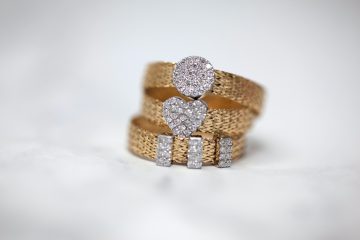The pearl is one of nature’s great wonders and has been used as jewelry for thousands of years. Sparkling pearls have always been a sought-after symbol of wealth, status, and fidelity. Until the 20th century there were only natural pearls, but today the majority of the pearls sold are cultured pearls.
What are natural pearls?
A true natural pearl is naturally created by seafood such as oysters, mussels, and snails. When a foreign object penetrates the shell, the mussel defends itself by enclosing it in mother of pearl – and thus, over time, forms a beautiful, shiny pearl. In the past, there were natural pearls all over the world, but today they are extremely rare and expensive. Several thousand mussels must be opened before you are lucky enough to find a pearl.
What are cultured gems?
Cultured pearls are cultivated by humans by planting a small pearl ball in the mussel. It is then cared for about 18 months when it forms new mother of pearl on the ball.
Freshwater or saltwater pearls
All beads are either freshwater or saltwater beads, depending on where they have been grown. Saltwater pearls come from the oceans and oceans and can have several different colors, such as white, pink, gray and purple. Freshwater pearls come from lakes and streams and have white, pink, purple or peach shades.
The difference in the quality of pearls
Several different factors affect the value of a pearl. The most important thing is whether it is a natural gem or not. In addition, weigh in how large and how glittering the pearl is. The rounder and more regular it is, the higher the price.
Pearls are no longer just something for older women. The classic and timeless beads fit everyone, regardless of age, and create a nice contrast to modern and minimalist jewelry. It can be a statement ring with a single exclusive pearl, classic pearl earrings or a pearl necklace with a modern twist.



